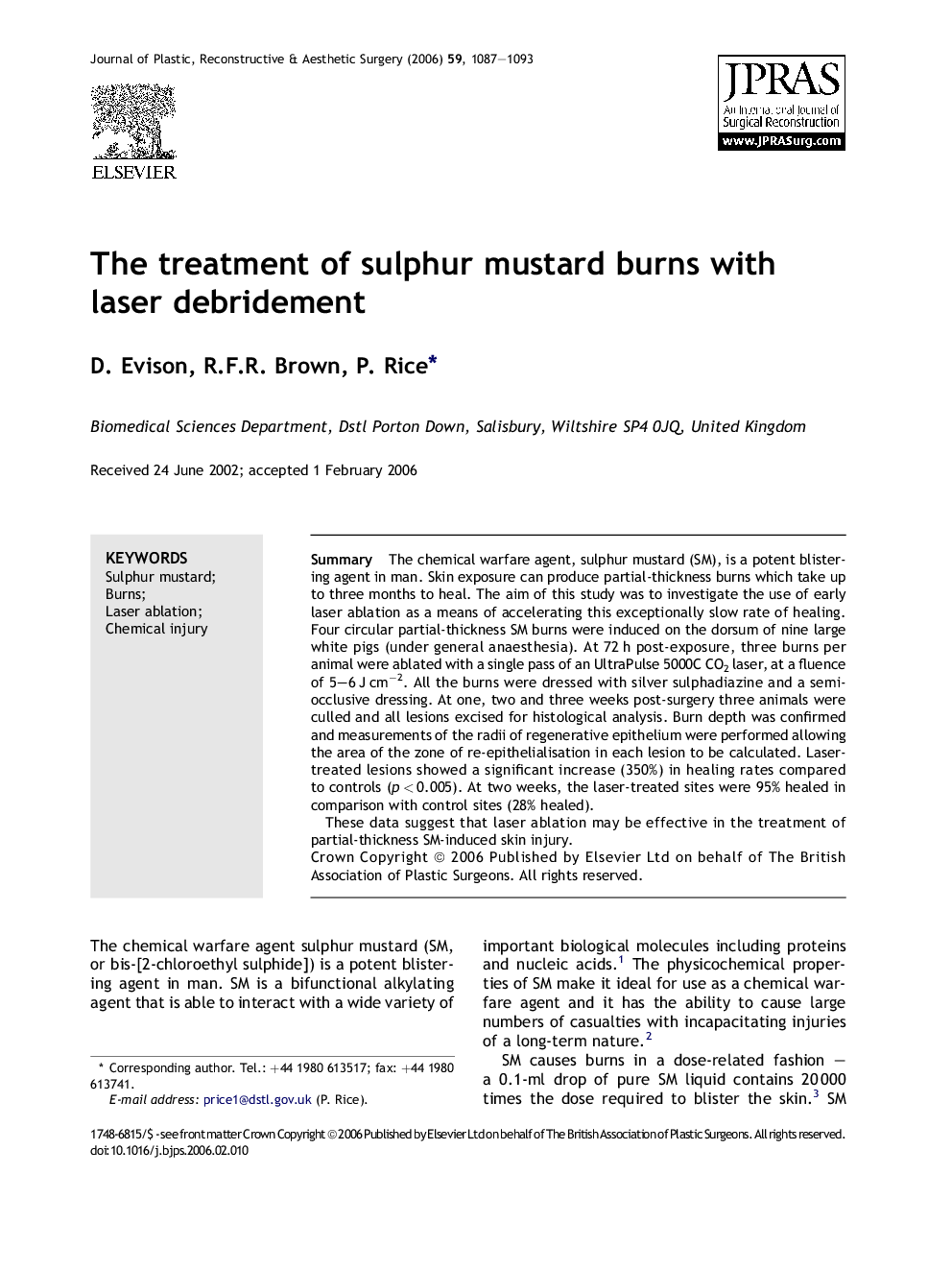| Article ID | Journal | Published Year | Pages | File Type |
|---|---|---|---|---|
| 4121627 | Journal of Plastic, Reconstructive & Aesthetic Surgery | 2006 | 7 Pages |
SummaryThe chemical warfare agent, sulphur mustard (SM), is a potent blistering agent in man. Skin exposure can produce partial-thickness burns which take up to three months to heal. The aim of this study was to investigate the use of early laser ablation as a means of accelerating this exceptionally slow rate of healing. Four circular partial-thickness SM burns were induced on the dorsum of nine large white pigs (under general anaesthesia). At 72 h post-exposure, three burns per animal were ablated with a single pass of an UltraPulse 5000C CO2 laser, at a fluence of 5–6 J cm−2. All the burns were dressed with silver sulphadiazine and a semi-occlusive dressing. At one, two and three weeks post-surgery three animals were culled and all lesions excised for histological analysis. Burn depth was confirmed and measurements of the radii of regenerative epithelium were performed allowing the area of the zone of re-epithelialisation in each lesion to be calculated. Laser-treated lesions showed a significant increase (350%) in healing rates compared to controls (p < 0.005). At two weeks, the laser-treated sites were 95% healed in comparison with control sites (28% healed).These data suggest that laser ablation may be effective in the treatment of partial-thickness SM-induced skin injury.
